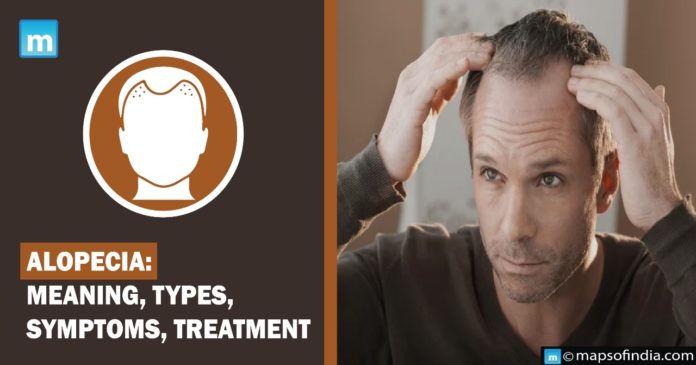Alopecia areata is a common autoimmune skin disease that causes hair loss on the scalp, face, and other body areas. It can be temporary or permanent. Also, some people lose hair in a few spots, and some only lose it in a few places. However, it can mainly result from heredity, medical conditions, or ageing.
When you have the disease, the cells in your immune system gather and are known to attack the hair follicles, leading to loss of hair.
Some common types of Alopecia:
Types of conditions that can affect your scalp:
- Alopecia Totalis
This is another form of Alopecia aerate that makes you lose all the hair on your scalp. Usually, you lose all your hair on your head whenever this happens.
- Androgenic Alopecia
This form of Alopecia is common in both genders. Therefore, it is also referred to as male-or-female pattern hair loss.
In males, this condition often leads to complete baldness or partial baldness, while in women, your hair starts thinning, but it is doubtful you become bald.
- Traction alopecia
It is caused by repeated stretching or pulling of the hair or putting stress on your hair. It usually develops in individuals who wear tight ponytails, buns, dreadlocks, or braids.
Here are a few possible causes of Alopecia:
- Hereditary and Hormones
Dihydrotestosterone (DHT) is a hormone derived from testosterone it is the male sex hormone. DHT binds to testosterone and weakens it causing hair loss. Even Women have testosterone, not at the same level as males, but when there is an unbalance in a female’s sex hormone, the DHT can cause androgenic Alopecia.
- Stress
Yes, stress can lead to a significant amount of hair loss, in Telogen effluvium is a type of Alopecia where hair loss happens in excess, and this includes heavy medication, Stress, Childbirth, and Restrictive dieting.
Who is more vulnerable to alopecia areata?
The disease can develop within anyone, although some people have a greater risk of developing it. These include:
- A blood relative with a record of it. It is estimated that almost 10-20% of people with this disease already have a family member who has it.
- Individuals who have family members with autoimmune disorders like diabetes or Thyroid.
- Research by the American Academy of Dermatology also found that people with asthma, Hay fever, and Down syndrome are likely to get alopecia areata.
Symptoms of Alopecia
Since the symptom of the disease is hair loss, it can show up in many different ways depending on what is causing it.
- Circular or Patchy Bald Spots
- Sudden loosening of hair
- Full-body hair loss
- Gradual thinning on top of the head
- Patches of scaling that spread over to other scalps.
Is there any treatment available?
The simple answer is no, and there is no exact treatment to fix it. However, it can be treated with the help of some meds that can help in growing back the hair.




